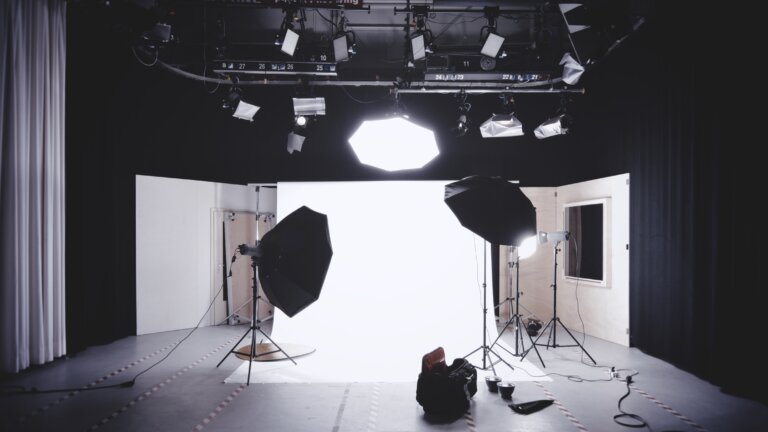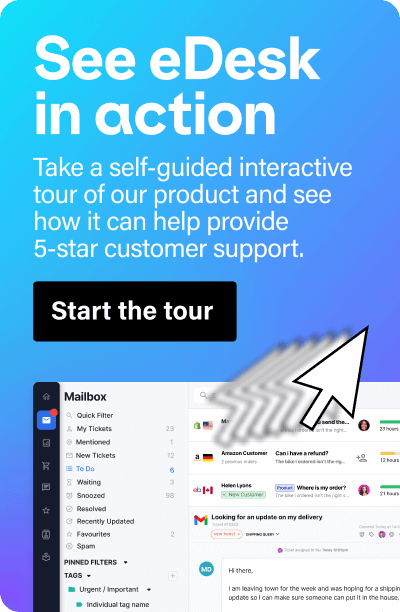Just under half of online shoppers say that not being able to physically examine a product is the worst part of online shopping. As a highly customer centric marketplace, Amazon appreciates this.
Although it’s not the same as trying something on, Amazon images can help shoppers experience a product – and this drives sales. Let’s run through the rules for Amazon images, as well as eight optimization tips for boosting sales.
Why Amazon images are so important
Amazon images play an integral part in nurturing sales for your business. But they also contribute to customer satisfaction.
It’s important to carefully choose the right leading image for each Amazon listing. This photo appears in search results and is the first thing potential customers see. It helps you stand out from the crowd and encourages shoppers to click-through to your product page.
Then, within product pages, sellers need to provide a selection of more detailed photos. This gives shoppers the information they need to convert. Ask yourself what shoppers would examine if they were buying your product in a store.
Providing accurate and detailed product photos can also benefit sellers post purchase. As shoppers will know precisely what their purchase looks like, they won’t get any nasty surprises upon delivery. So both returns and negative feedback are less likely.
Amazon image requirements: File types and names
The first point of reference for creating great Amazon images is the marketplace’s own criteria. If you don’t get these right, your images won’t upload.
Amazon only accepts four file types for product images: TIFF, JPEG, GIF or PNG.
Every file must carefully follow Amazon’s naming conventions as well. Each one should include the following, all separated by a period:
A product identifier: An Amazon ASIN, ISBN, EAN, JAN or UPC
A variant code: This four-character code is optional, but should be used if you’re uploading more than one image to a product page.
- Add the variant code ‘MAIN’ to the primary product image that you want to appear in search results. If you don’t include a variant code, Amazon will assume this is your main image. But if you then upload images with other variant codes, none of them will display
- Add variant codes like PT01 and PT02 for additional product shots
- Add TOPP, BOTT, LEFT, RGHT, FRNT or BACK for shots taken from different angles
- Use codes IN01 and In02 etc. for interior shots of books
A file extension: You can use .tif, .jpg, .gif or .png to identify the image’s file type.
So Amazon sellers need to follow the formula – ASIN.VARIANT.FILETYPE
Take B000123456.PT01.jpg as an example. This file name lets Amazon know that this is a secondary product image in a JPEG format – it can even tell what product is featured.
Amazon image requirements: Size
Amazon needs its images to be high quality so users can take advantage of its zoom feature. For this reason, it only accepts images which are high resolution enough to avoid pixelation or fuzziness. Images should be at least 1,000 pixels in height or width.
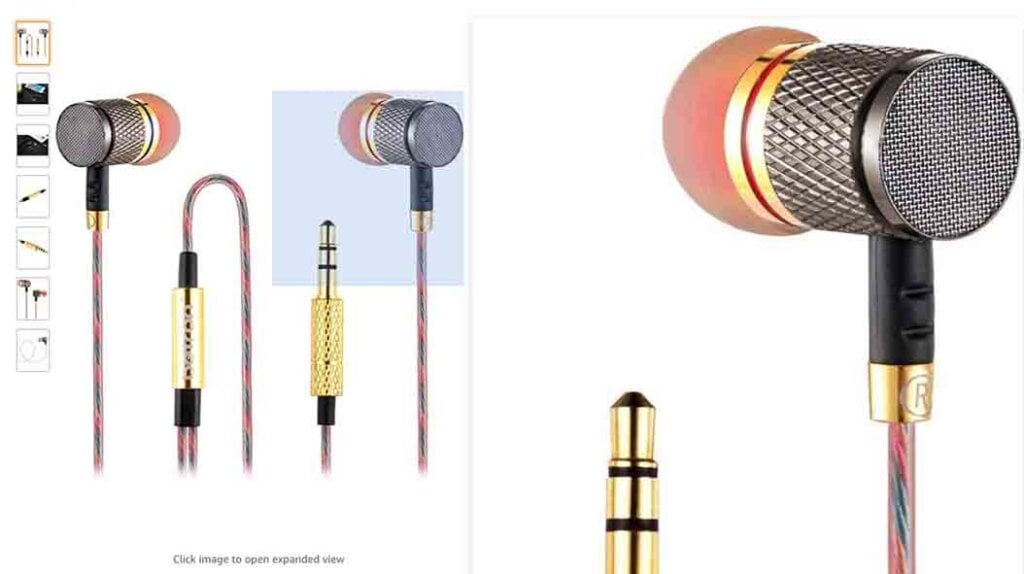
Amazon images need to be large and high resolution enough to enable a zoom.
Don’t worry about files being too large, Amazon compresses images before displaying them on its site. So save images at the highest possible quality and submit them with minimal compression. Leave the rest to Amazon!
Other image requirements
As well as technical specifications, Amazon also provides guidelines on what should be contained within your images.
For each product page’s leading image – the one that will appear in search results – here’s what you need to know:
- The image must be of the product – no drawings or illustrations are allowed
- Don’t feature additional objects, text, graphics or inset images
- The whole product must be in the frame
- Products should fill 85% or more of the image frame. (Though when using cover art from books, CDs and DVDs, it should fill 100% of the frame)
- Backgrounds must be pure white – RGB 255, 255, 255
- The images must be in focus, professionally lit and photographed or scanned with realistic color. You should shoot in sRGB or CMYK color modes
- And obviously, offensive images aren’t allowed
Remember this is the first time a user sees your product, so you want to offer a clear and striking overview. Give them a reason to click through.
Additional product page photos are all about showing detail in order to bag a sale. The above rules generally apply to these secondary Amazon images, but there are exceptions:
- Backgrounds don’t have to be white, they can display different colors and environments
- You can include cropped or close-up images to showcase product details
- Text and demonstrative graphics are allowed
- You can include other products or objects to demonstrate the scale or use of a product
Top tips to create incredible Amazon images
Uploading an image doesn’t necessarily mean it will be added to a product page. Amazon uses a complex image ranking algorithm to determine what is displayed. However, the better your images, the more likely they are to feature.
Here’s some tips to help get your Amazon images up-to-scratch.
1. Invest in some quality equipment
You don’t need the most expensive camera out there, but you won’t get away with a basic point-and-shoot model.
Instead, you should invest in a DSLR with a selection of settings. You’ll also need:
- A tripod
- Some lights
- Editing software
Once you’ve got your kit together, take some time to learn the buttons, features and techniques needed to take great photos. A camera is only as good as its user.
2. Shoot in RAW
A RAW file is an uncompressed image file. Taking photos in this format results in the most detailed photos possible. This means you can crop and edit them as needed without ending up with a fuzzy shot. This wouldn’t work with JPEGs.
On the downside, these files use lots of memory and are slow to upload to your computer. You’ll also have to save edited images in another file format, such as JPEG, in order to add it to Amazon. However, it’s worth having these high quality images to hand.
3. Try off-camera lights
Lighting is extremely important when it comes to photo quality. Getting it right allows you to capture product details. Whereas getting it wrong results in a loss of trust among shoppers.
You shouldn’t rely on your camera’s flash setting as this will lead to uneven lighting and shadows.
Instead, try using two off-camera lights. Put one at a 45-degree angle behind the product. Then place the other in front of the product – opposite the first light. This should provide even lighting. You could also try turning up the backlight to make your product stand out.
Alternatively, if you want to use your flash, get a reflector card to diffuse the light better.
4. Experiment with backgrounds
Your main image must have a pure white background – and in general this is standard practice.
However, try out different neutral background colors like shades of black, grey and tan. The more it contrasts with your product, the more it will stand out. This allows you to take eye-catching photos while also maintaining a professional look.
5. Avoid the zoom feature
Amazon images have to fill the frame but don’t use your camera’s zoom function to do this. It will reduce the quality of your photo. Instead, get close to your products and take shots from every angle.
When taking close-ups, be sure to highlight small details and key features. Try to address common FAQs too.
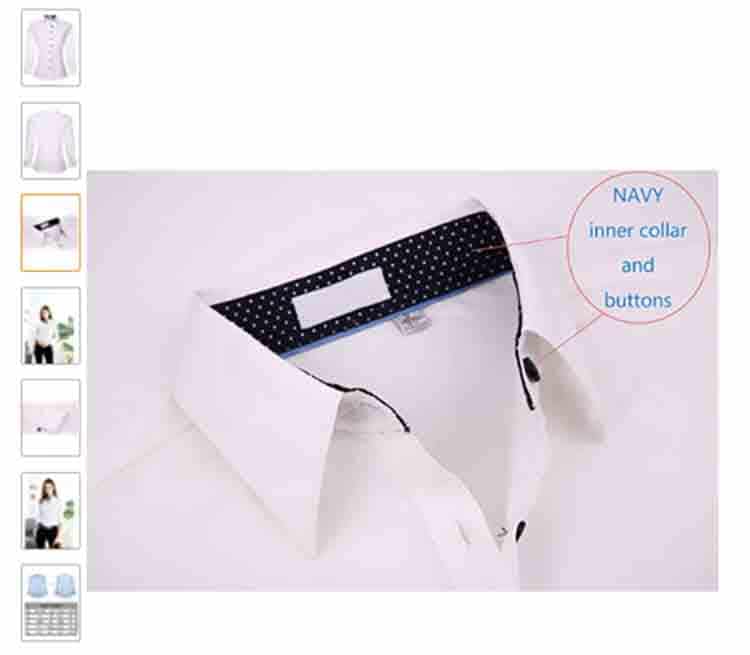
6. Let customers see the product’s size
For products like furniture, it’s particularly important to let shoppers know how big an item is. Amazon sellers can do this by adding measurements to a photo or by shooting the product alongside something else for perspective. Ideally, you should provide clarity by doing both.

Make sure customers are able to see how big your image is.
This helps shoppers make quick and sensible purchases, contributing to an increase in conversions and a reduction in returns. Images of instruction manuals and size guides can also help with this. But remember, they aren’t suitable as main images.
8. Incorporate lifestyle images
Secondary images can show your product in use. This is a great opportunity to inject some character and fun into your photos.
Lifestyle images help shoppers imagine themselves using your product. Plus, research shows that photos which feature people convert more – but only if they’re genuine. Stock photos won’t cut it.
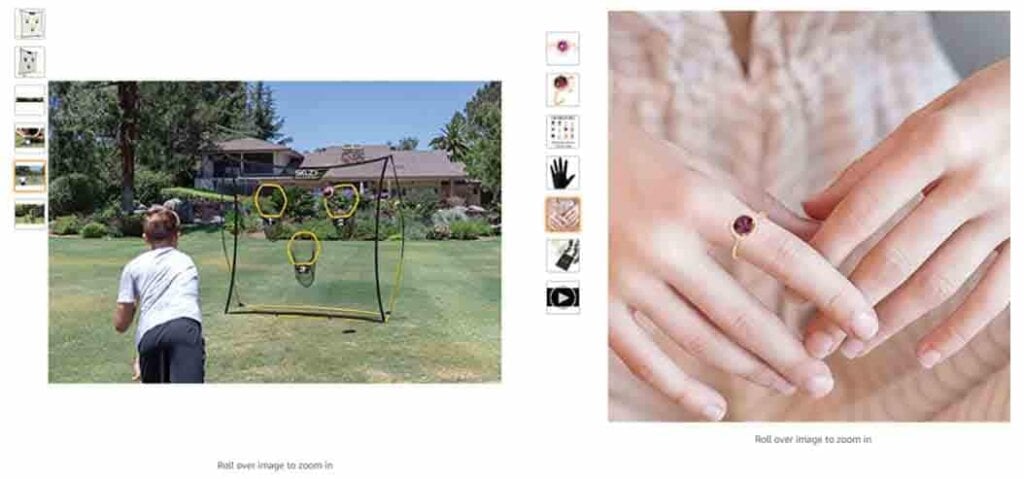
Sure, shooting product photos sucks up time and money. But it’s worth the effort because they contribute to a great customer experience. You’ll quickly earn the investment back through increased sales too. One photo shoot will give you great material for all your marketing channels – think newsletters, Instagram, Amazon sponsored products and Facebook advertising.
